Most of the 63 National Parks in the US have an entrance fee. However, not ALL of them do. If you’re looking for a national park to visit and want to avoid paying an entrance fee, here are the National Parks that you do NOT have to pay to enter.
I’m James Ian and I’m a national park expert. In this guide, I’ll share with you all the free parks, but also share some hidden fees that maybe make some of them not quite the deal they may initially seem. Let’s take a look …
🛏️FIND A HOTEL: Search now
🚘FIND THE CHEAPEST CAR RENTAL: Search Discover Cars for the best deals
✈️FIND THE CHEAPEST FLIGHTS: Search Skyscanner for the best deals
🧳GET TRAVEL INSURANCE: Get insured with Travelex before you go
📱TAKE AN AUDIO TOUR: Buy an audio tour now
No time right now to read about these free national parks in the USA? Pin It and save it for later:
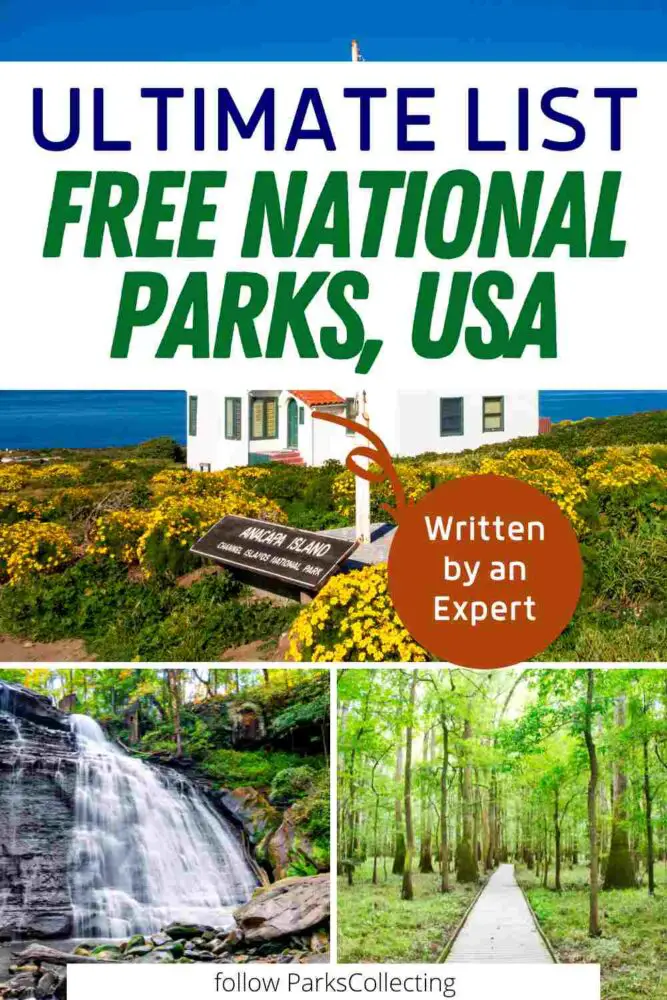

Subscribe to daily national parks planning tips, travel inspiration and trip ideas and I’ll send you a free PDF of this Guide:
16 Free National Parks in the USA
Table of Contents
1. Biscayne National Park, Florida
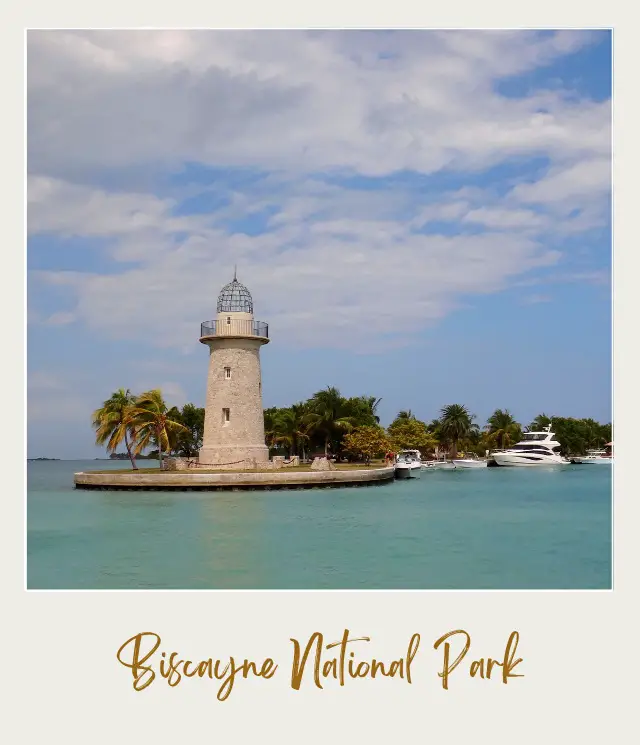
Biscayne Bay National Park is just an hour south of Miami, making it very convenient to add on to a vacation there. 95% of the park is underwater, so the main activities are snorkeling, diving, boating, kayaking/ canoeing, and fishing.
The Dante Fascell Visitor Center is on the mainland in Homestead and has movies, an art gallery, exhibits, walking paths, and a porch with rocking chairs where you can relax and enjoy the views of Biscayne Bay. You can even get to the Visitor Center from downtown Homestead on the free seasonal trolley.
What’s the catch?
Entrance is free, but to see anything other than the Visitor Center, you’ll need to either have your own boat or pay for a tour. There are several tour operators offering sightseeing boat tours, snorkeling and/ or scuba diving tours, and guided canoeing/ kayaking trips.
2. Channel Islands National Park, California
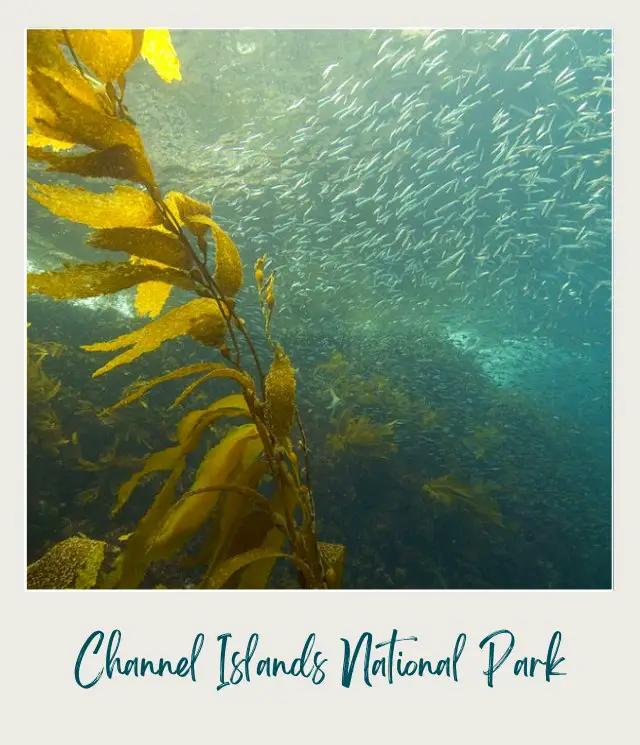
Channel Islands National Park comprises five islands off the coast of southern California. There are 3 more Channel Islands that are part of the archipelago but not part of the national park. The five islands are: Anacapa, Santa Cruz, Santa Rosa, San Miguel, and Santa Barbara.
There are two Visitor Centers on the mainland: the main Robert J. Lagomarsino Visitor Center in Ventura and the small Outdoors Santa Barbara Visitor Center. There are free tidepool talks, a “From Shore to Sea” lecture series, education programs for students, a display of marine aquatic life, exhibits featuring the unique character of each park island, 25-minute park movie, “A Treasure in the Sea,” and a bookstore at the main Visitor Center.
What’s the catch?
There’s no entrance fee to enter the park, but if you want to visit any of the islands, you’ll need to have your own boat or buy a ticket through Island Packers on a boat to the islands or pay for a day trip on a dive boat. Island Packers boats leave from Ventura or Oxnard. I recommend staying overnight near the harbor that your boat leaves from. Check accommodation options on the mainland on Expedia.
There is a primitive campground on the each of the islands, and there are nice hiking trails on all the islands. If you want to get out onto the water, you’ll need to bring your own kayak/ canoe or pay for a guided kayak tours and or kayak rentals.
You can also take a whale watching trip (also not free). Pacific Gray Whales migrate through the Santa Barbara Channel between December and April and the large baleen whale species such as Humpback, Blue and Fin Whales feed in the area June to September.
3. Congaree National Park, South Carolina
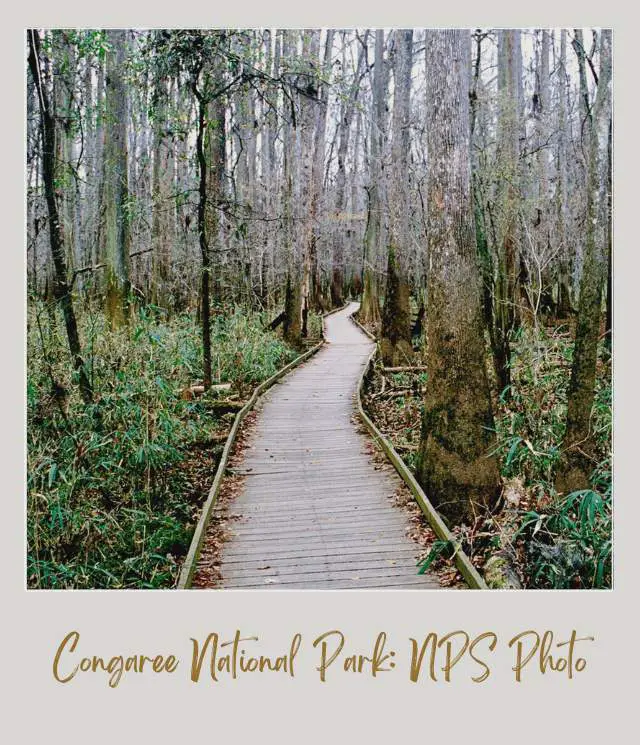
Congaree National Park has the largest intact expanse of old growth bottomland hardwood forest remaining in the southeastern United States. It’s a beautiful park – and it’s absolutely free. There are plenty of hiking trails, from a short hike on the Boardwalk Trail, or a long trek into the backcountry.
The Harry Hampton Visitor Center, which is open year-round, has free ranger programs, natural and cultural history exhibits, a park film, and a bookstore.
What’s the catch?
None. You really can visit for free. Although, if you want to canoe or kayak on Cedar Creek, you’ll need your own canoe or kayak. If you don’t have them, then there are several outfitters who rent out equipment, so that you’d need to pay for.
4. Cuyahoga Valley National Park, Ohio
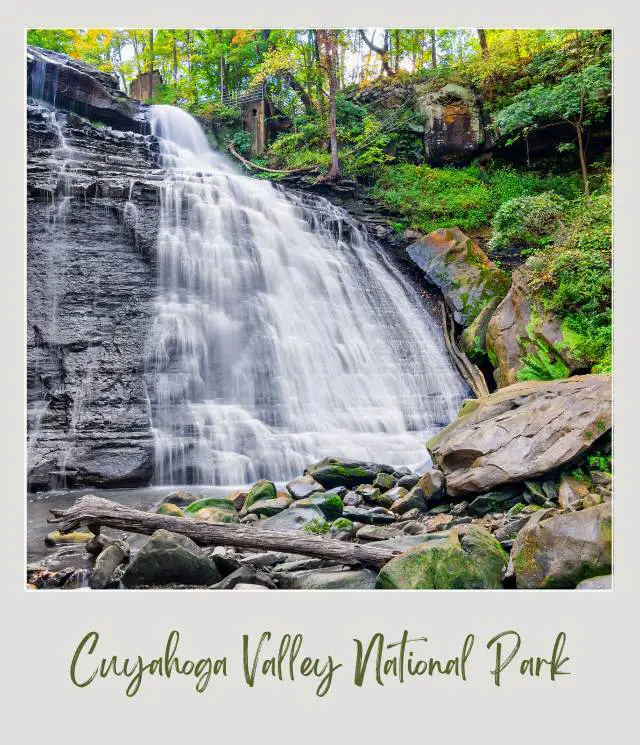
Cuyahoga Valley National Park is a lovely valley with the beautiful winding Cuyahoga River, deep forests, rolling hills and historic farms. There are plenty of hiking trails, and you can walk or ride the Towpath Trail to follow the historic route of the Ohio & Erie Canal.
What’s the catch?
None, you can enjoy the park without paying.
However, there are a couple of things you need to pay for. The Cuyahoga Valley Scenic Railroad winds its way through the Cuyahoga Valley and alongside the Cuyahoga River. You can buy tickets here.
If you want to watch the annual synchronized fireflies, you need to enter a lottery (there’s a small non-refundable fee to enter) and then, if you get a space, pay for a vehicle pass.
You can also pay for a ranger-guided canoe tour or book a tour with a private outfitter if you don’t have your own equipment.
5. Gates of the Arctic National Park and Preserve, Alaska

The northernmost national park in the USA is the very essence of untouched Alaskan wilderness. There are lakes, forests and mountains. But no roads, no trails, no established campsites, no cell phone service, and indeed, no services at all. There are also no entrance fees.
What’s the catch?
With no roads, the only way to get here is to hike in and backcountry camp (there are no trails!) or to catch a tiny (and expensive) charter plane. Charter costs always include the pilot’s round-trip.
The most convenient option is to charter a plane directly from Fairbanks, but this is usually more expensive because of the longer distances and flying times involved. You can reduce costs by taking a scheduled commercial or mail flight to the community nearest to your destination and charter an aircraft from there.
Here are the authorized charter plane companies.
6. Great Basin National Park, Nevada
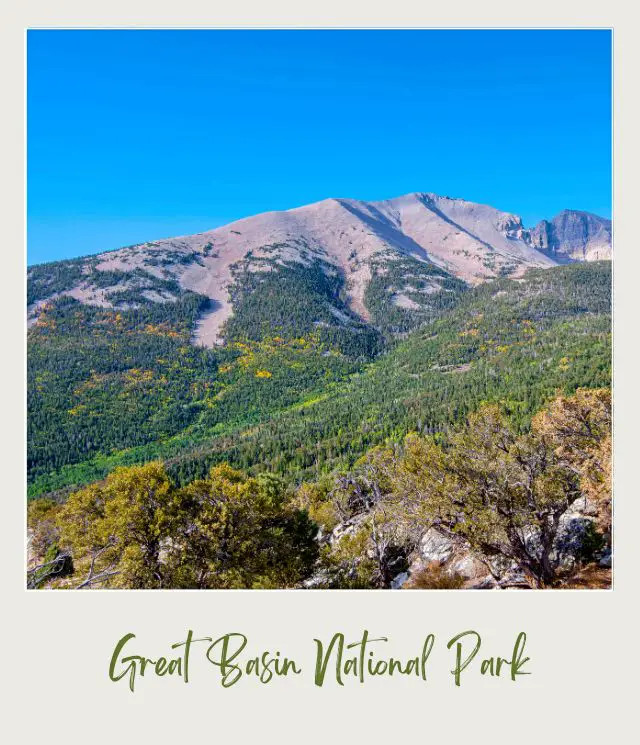
Grand Basin has the 13,063-foot glacier-capped Wheeler Peak, sagebrush-covered foothills, ancient bristlecone pines, desert landscapes, and incredible night skies. There are plenty of things to do without spending a dime: hiking, fishing, bird watching, star gazing, attending a ranger program, wildflower viewing …
What’s the catch?
You can absolutely visit the national park without spending money. However, if you want to explore the amazing Lehman Caves, you need to take a ranger-guided tour. Two tours of Lehman Caves are currently offered: Gothic Palace and Parachute Shield Tours. Reservations can be made 30 days in advance on Recreation.gov and I highly recommend them.
7. Great Smoky Mountains National Park, North Carolina and Tennessee

Great Smoky Mountains is the most popular national park in the country. Partly because of its east coast location, partly because it’s great (pun intended), and partly because you need to go through it to get places. It spans a huge area in two states. There are beautiful woods, waterfalls, several fascinating historic sites and miles of hiking trails.
There is no entrance fee, which I’ve always assumed is because the main road through it is a major transport artery.
What’s the catch?
While there’s no fee to enter, there is a fee to park! If you park your vehicle anywhere in the national park for more than 15 minutes, you need a parking tag. You can get them for a day, a week or a year at several places in the area in person or online.
Annual parking tags must be displayed in the front, lower passenger side windshield. Daily and weekly parking tags must be placed face-up on the front, lower passenger side dashboard.
8. Hot Springs National Park, Arkansas

The national park is centered around historic bathhouses fed by nearly 4,000-year-old thermal springs, but you can also enjoy mountain views, incredible geology, forested hikes, and abundant creeks – all in the middle of town. There are scenic drives, short walks and biking paths that are free to use.
You can drink the natural spring water for free. There are thermal spring fountains and cold spring fountains. You can also touch the thermal water, which comes out of the ground at 143°, but is cool enough to touch by the time it reaches the pools.
You can also take a free, self-guided tour of the historic Fordyce Bathhouse.
What’s the catch?
While there is no entrance fee to the park, if you want to actually soak in the thermal springs, you need to pay to visit one of the bathhouses. The Buckstaff Bathhouse, which has been continuously open since 1912, offers a traditional bathing experience for people 10 & older. The Quapaw Bathhouse offers modern day spa services for people 14 & older.
There is also a fee to climb the Hot Springs Mountain Tower.
9. Kenai Fjords National Park, Alaska

This is another Alaskan national park that has no entrance fee. It’s a spectacular park on the edge of the Kenai Peninsula with almost 40 glaciers flowing from the huge Harding Icefield.
There is one road into the park. The road from Seward to the Exit Glacier area is typically open from around mid-May to late-October. There you can hike short trails with magnificent views or take a free ranger-led walk to Glacier Overlook.
The nature center includes exhibits about the Exit Glacier area, an Alaska Geographic bookstore, and rangers to help answer questions about the area. Rangers also offer free pavilion talks throughout the summer.
What’s the catch?
If you want to see anything other than the Exit Glacier area, it quickly gets expensive. Much of the park can only be accessed by water or air. If you want to kayak, you’ll need to take a water taxi or charter boat from Seward to Aialik Bay, Northwestern Lagoon or Bear Glacier Lagoon.
Over half the park is covered in ice and if you want to reach those hard to reach places or take a scenic flight, you’ll need to arrange an air taxi.
10. Kobuk Valley National Park, Alaska

There’s a bit of a pattern here – spectacular Alaskan national parks that are free to enter but expensive to get to. Highlights of the Kobuk Valley include the incredible Great Kobuk Sand Dunes, the awe-inspiring caribou migration, and the fascinating 8,000 years of history at Onion Portage (Paatitaaq).
The park headquarters and visitor center are located 80 miles west of the park at the Northwest Arctic Heritage Center in Kotzebue. There’s information about the parklands, special programs, souvenirs, and a free museum about arctic wildlife, geology, and Iñupiaq culture and subsistence practices. There is also a large lobby, free WiFi, and a collection of films, puzzles, and books.
What’s the catch?
Those films, puzzles, and books are there to pass the hours and days you may be spending there on a long layover or weather-related delay.
There are no roads in the park, so you’ll need to charter a small plane to get anywhere. Commercial airlines provide service from Anchorage to Kotzebue, or from Fairbanks to Bettles. Once in Kotzebue or Bettles, you have to fly to the park with authorized air taxis.
There’s also nowhere to stay, so you need to be able to survive in hostile conditions in the wild if you decide to overnight. If you have the right equipment and experience, you could also hike or boat.
Winter access is by plane, snowmobile, dog sled, or on foot. There are no local equipment rental services in Kotzebue.
If all that sounds daunting, you can arrange a flightseeing flight. An option is a day trip with a landing at Kobuk Sand Dunes. All that comes at a hefty price, of course.
11. Lake Clark National Park and Preserve, Alaska

This is another Alaskan national park that doesn’t charge an entrance fee. This is a great place to see pristine Alaskan wildness, dramatic mountains, crystal clear lakes, brown bears, and salmon runs.
What’s the catch?
Like many of the Alaskan national parks, Lake Clark is remote, with no roads. So, you need to pay for an expensive charter plane to get you anywhere. Fixed-wing aircraft are allowed to land on all suitable lakes, rivers, beaches, and gravel bars unless it’s a restricted area.
You can also access the east side of the park on the Cook Inlet coast by boat via an open-ocean crossing.
12. New River Gorge National Park and Preserve, West Virginia

The park is centered around the dramatic New River Gorge and the whitewater river flowing through it. There are miles of free hiking trails and plenty of free ranger programs offered.
There are also a couple of wonderful scenic drives – the 83-mile New River Gorge Scenic Drive, the Fayette Station Road, and a free self-guided audio African American Heritage Tour.
What’s the catch?
There’s no catch, but there are some optional activities that you need to pay for. These include a 3-hour Bridge Walk and commercially-operated white water rafting trips.
13. North Cascades National Park, Washington

North Cascades National Park is one of the least visited national parks in the USA, and I’ve never understood why. The alpine scenery is breathtakingly beautiful – and completely free!
Much of the park is wilderness, but North Cascades Highway (State Route 20) passes through the main Ross Lake National Recreational Area. This is where the North Cascades Visitor Center, Skagit Information Center, the Gorge Powerhouse and the most famous sites, such as Diablo Lake are.
You can enjoy the scenic drive and the incredible hiking trails for free.
What’s the catch?
None, to visit the main part of the part. However, if you want to visit Stehekin, a village in the Lake Chelan National Recreation Area, which has no roads to it, then you need to pay for a ferry or charter flight.
14. Redwood National Park, California
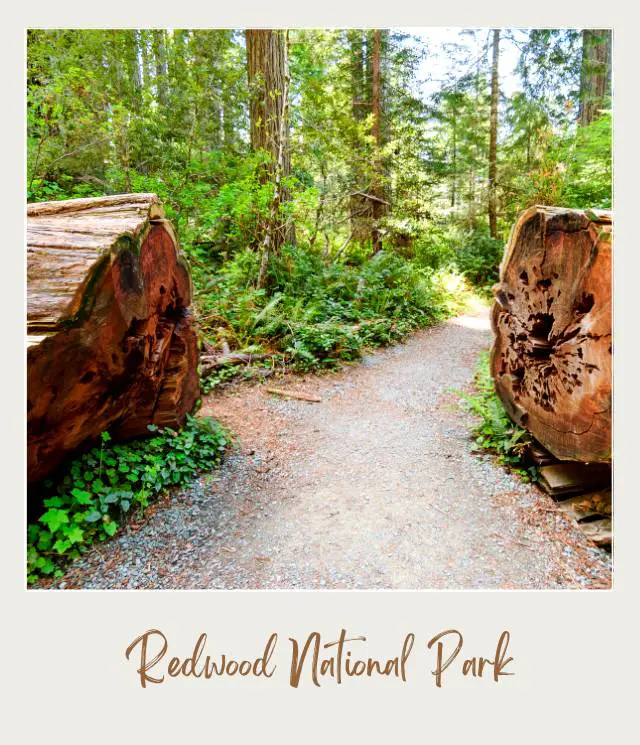
The park is administered with the surrounding state parks and officially called Redwood National and State Parks.
The parks are home to the largest concentration of the tallest trees on the planet. In addition to the world’s tallest trees, there are open prairies, oak woodlands, pristine rivers and dramatic coastlines.
What’s the catch?
There’s no fee to enter the national park, but, strangely (I think), it’s a different story for the state parks. Jedediah Smith, Del Norte Coast, and Prairie Creek Redwoods California State Parks collect day-use fees at developed campground entrance stations and there’s an entrance fee to drive to Gold Bluffs Beach / Fern Canyon in Prairie Creek Redwoods State Park.
15. Voyageurs National Park, Minnesota
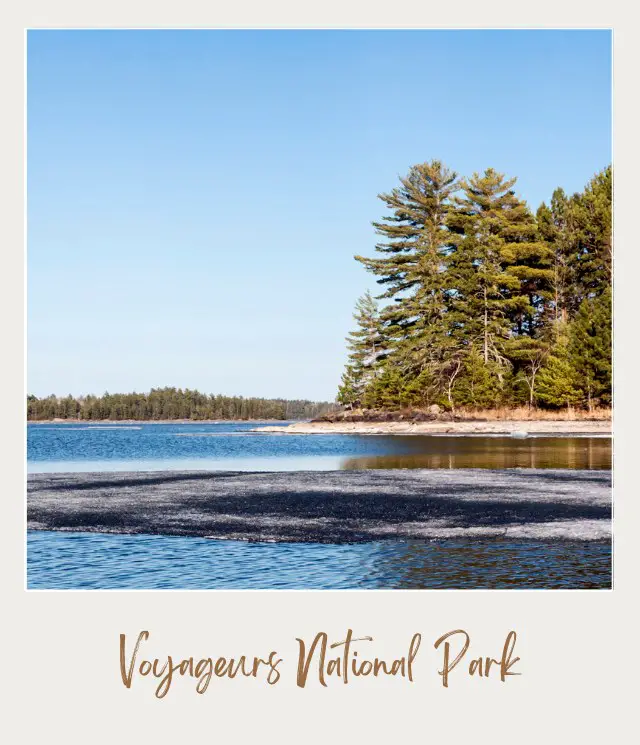
This beautiful national park is especially popular with canoeists, kayakers, boaters, and fishermen. This is because most of the national park is water – lakes and streams. Most of the land area in the park is the Kabetogama Peninsula, which is accessible only by boat, and islands.
What’s the catch?
It’s free to enter, but to get anywhere, you’ll need your own boat, canoe or kayak or you’ll need to rent one or pay for a guided tour, water taxi or chartered boat ride. You can find a full list of commercial operators here.
If you visit in winter, snowmobiling, snowshoeing or cross-country skiing on the frozen waterways and lakes is possible.
16. Wrangell-St. Elias National Park and Preserve, Alaska

Wrangell-St. Elias National Park is America’s largest national park. At 13 million acres, it’s the size of Yellowstone, Yosemite, and Switzerland combined! It’s endless Alaskan wilderness.
There are two dirt roads that lead into the park: the Nabesna Road in the northern Nabesna District of the park and the McCarthy Road in the southern Kennecott District, where you can visit the Kennecott Mines National Historic Landmark.
The Wrangell-St. Elias Visitor Center is in Copper Center, along the Richardson and Edgerton Highways. They have an exhibit hall, a theater, an amphitheater for ranger-led programs, the Ahtna Cultural Center, scenic overlooks and short hiking trails.
What’s the catch?
It’s free to enter, but chances are you’ll need to pay for parking, or for a shuttle, ferry, or other transportation while visiting the park.
The only way to reach most of the park, such as the Yakutat coastal area is by boat or airplane.
Map of all the free National Parks in the USA
Do you have any other tips for planning a multi-generational national parks trip? I’d love to hear about them. Join my private Facebook group National Parks Collectors and comment and let me know (you can also pick up extra planning tips, share your photos and stories with other national park lovers and more).
America The Beautiful Annual Pass
You don’t need to pay anything to visit any of these National Parks. But if you end up visiting more than one of the other parks that have an entrance fee, you can save money by buying an America The Beautiful Annual Pass.
The pass is good for a whole year, and gives you entry to over 2,000 sites, including all 431 units in the National Park Service system as well as sites run by the Fish and Wildlife and Forest Services, and the Bureaus of Land Management and Reclamation or Army Corps of Engineers.
For sites that charge per vehicle, a car, driver and passengers are covered. Up to 4 adults can enter sites on foot, with 15-year-olds and under getting in for free.
Get an America The Beautiful Annual Pass here.
Read more about this and other national parks passes including those for veterans and disabled persons.
Are you just starting to think about taking a National Parks trip? Get Inspiration
Are you starting to plan a trip to a national park? Read my free guides
Do you need tips and additional information? Read a selection of tips for visiting US national parks
Are you ready to book your trip? Use these Planning and Booking Resources
Do you want to read a book about US national parks? Check out my Recommended Reading Lists
Subscribe to daily national parks planning tips, travel inspiration and trip ideas and I’ll send you a free PDF of this Guide:
16 Free National Parks in the USA
If you liked this article, please share the love and Pin It to your National Parks board!


About the Author
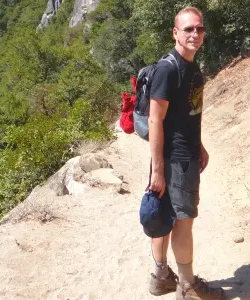
James Ian is a national park, camping and hiking expert.
He has dedicated his life to travel, visiting more than 80 countries, all 7 continents and most of the national parks in the United States. With over 35 years experience in the travel industry, James has worked on cruise ships, at resorts and hotels, and as a travel planner who’s helped hundreds of people plan successful trips to US national parks.
Based on his experience visiting our national parks multiple times, in-depth research and expertise as a travel planner, James has published detailed itineraries for many of the major national parks in the US. These itineraries, as well as in-depth park guides, and other resources will help you have your own incredible trip to US national parks without stress and hassle.
As a national park expert, James has contributed to many publications, including USA Today, Newsweek, Time Business News, Savoteur, Best Trip, and Wired.
I’m a member of the Amazon Services LLC Associates Program. As an Amazon Associate I earn from qualifying purchases.
